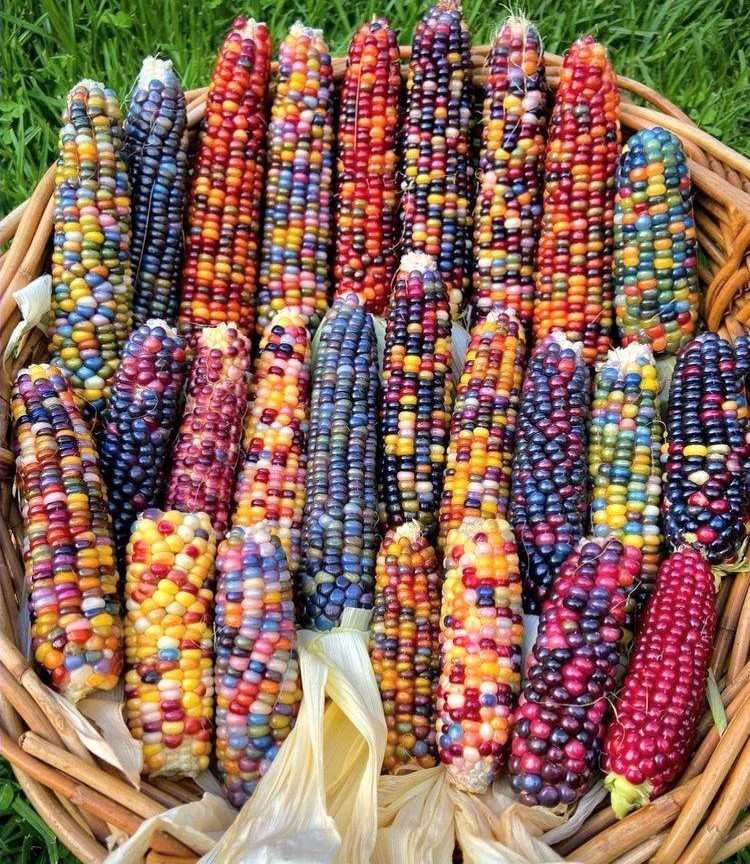Bhupendra Pratap Singh, the Supply Chain Manager at Roquette India Pvt. Ltd., a subsidiary of the French multinational Roquette, spearheads the management of maize procurement across several states – Bihar, Madhya Pradesh, Maharashtra, Uttar Pradesh, and Uttarakhand. Roquette, a global leader in plant-based ingredients and a major provider of pharmaceutical excipients, stands as India’s largest starch manufacturer, boasting a production site and research and development unit in Rudrapur, Uttarakhand.
Looking ahead, projections indicate a steady 10% annual increase in maize usage as feed. This growth aligns with the expanding poultry and starch industries, which drive higher maize consumption rates in India.
In an insightful conversation with The Interview World, Bhupendra Pratap Singh delves into the multifaceted utility of maize, the industry-specific demand dynamics, global consumption trends, and the state-wise maize production landscape. Here, we distill the key highlights from his interview.
Q: How does maize contribute to everyday life through its various utilities?
A: Maize, commonly known as corn, boasts a multitude of applications throughout daily life. Initially, it serves as a vital food staple for millions worldwide. Moreover, it offers versatility in various forms like corn on the cob, popcorn, and cornmeal. Moreover, maize plays a crucial role in livestock farming, being a primary ingredient in animal feed. Beyond its role in nourishment, maize finds extensive usage in diverse industrial sectors.
Its derivatives, such as cornstarch, are essential in manufacturing bioplastics, adhesives, and paper, while corn ethanol fuels the biofuel industry. Furthermore, sweeteners like high fructose corn syrup dominate the food and beverage market, and maize fibers contribute to textiles, albeit less frequently than traditional fibers. Additionally, maize supports the development of biodegradable products and serves as a raw material in pharmaceuticals, cosmetics, and personal care items. It remains a key component in the production of alcoholic beverages as well.
Lastly, maize husks and stalks are utilized decoratively, particularly during seasonal festivals and ornamental arrangements. This broad spectrum of applications underscores maize’s significance across various aspects of everyday life, from sustenance to industry and culture.
Q: How can we identify the industry with the highest demand for maize?
A: The demand for maize, a versatile crop, stems primarily from key industries. The animal feed sector stands out as the foremost driver, utilizing maize as a crucial ingredient in feed formulations for livestock such as poultry, swine, and cattle. Maize’s nutritional value and cost-effectiveness establish it as a cornerstone of animal nutrition globally. Moreover, maize plays a pivotal role in the food and beverage industry, being incorporated into various products like breakfast cereals, snacks, and baking ingredients. Particularly in regions where maize is a dietary staple, the demand for maize-derived food products remains consistently high.
Additionally, maize serves as a vital feedstock for ethanol production, contributing significantly to the renewable energy sector. Countries with biofuel mandates or incentives often witness substantial demand for maize for ethanol production. Beyond these sectors, maize finds application in various industrial processes, including the production of bioplastics, adhesives, and pharmaceuticals. While the demand for maize in these industrial uses may not match that of animal feed or food production, it nonetheless contributes to overall demand and diversifies the crop’s market reach.
Q: What factors contribute to the comparatively lower consumption of maize in India in comparison to other developed nations?
A: Currently, over 170 countries worldwide collectively produce nearly 1147.7 million MT of maize from an expansive area of 193.7 million ha, achieving an average productivity of 5.75 t/ha (FAOSTAT, 2020). The global consumption pattern of maize delineates that 61% is allocated to feed, 17% to food, and 22% to industry. Maize has secured a pivotal role as an industrial crop globally, with 83% of its production utilized in feed, starch, and bio-fuel industries, thereby offering extensive avenues for value addition through more than 3000 products. This multifaceted utility cements its position as a cornerstone of the global agricultural economy.
China, the USA, and Brazil emerge as the principal consumers, collectively accounting for over 50% of global corn production. Notably, in the 2022-23 period, the USA led with consumption of 11990M bushels, followed closely by China with 11692M bushels, and significant volumes were also consumed by the European Union (2996M bushels) and Brazil (2992M bushels).
Several factors underpin the relatively lower maize consumption in India compared to other developed nations. Firstly, Indian dietary habits and cultural inclinations prioritize grains such as rice and wheat over maize, a preference deeply entrenched in traditional cuisine and eating habits nationwide. Additionally, the limited extent and distribution of maize production in India affect its availability, particularly in rural regions where rice and wheat dominate cultivation and consumption.
Moreover, a substantial portion of maize produced in India is directed towards livestock feed rather than human consumption, mirroring the escalating demand for meat and dairy products. Furthermore, the underdeveloped processing infrastructure for maize products in India impacts both the availability and variety of maize-based goods in the market. Price and affordability considerations also contribute, with maize products often perceived as costlier or less accessible compared to alternatives like rice and wheat.
Q: How do maize production levels vary across states, and what is the distribution of production shares among them?
A: Throughout the year, maize thrives across all states of the country, serving myriad purposes such as grain, fodder, green cobs, sweet corn, baby corn, and popcorn, particularly in peri-urban areas. Predominantly, maize cultivation flourishes in key states, namely Madhya Pradesh (15%), Karnataka (15%), Maharashtra (12%), Rajasthan (9%), Uttar Pradesh (8%), Bihar (7%), Telangana (6%), Gujarat (5%), Tamil Nadu (3%), and Jammu & Kashmir (3%), together contributing over 80% of the total maize production.
In the global maize landscape, India claims the 7th position in production and the 4th position in cultivation area. Approximately 2% of the world’s maize production originates from India, covering 4% of the global maize cultivation area.




Vigilant observations by Sir provided a highly insightful piece of information 🙏🏻✨
Some truly great blog posts on this site, thanks for contribution.
very nice submit, i certainly love this website, keep on it
I’ve been browsing online greater than 3 hours today, but I by no means found any interesting article like yours. It is pretty price sufficient for me. Personally, if all website owners and bloggers made good content as you probably did, the internet might be a lot more useful than ever before. “Revolution is not a onetime event.” by Audre Lorde.
Just a smiling visitor here to share the love (:, btw outstanding design and style.
Howdy! This is my first visit to your blog! We are a collection of volunteers and starting a new project in a community in the same niche. Your blog provided us valuable information to work on. You have done a extraordinary job!
Nice post. I was checking continuously this blog and I’m impressed! Very useful info specifically the last part 🙂 I care for such info a lot. I was seeking this certain information for a long time. Thank you and good luck.
Thank you for sharing superb informations. Your website is so cool. I’m impressed by the details that you’ve on this website. It reveals how nicely you perceive this subject. Bookmarked this website page, will come back for extra articles. You, my pal, ROCK! I found simply the information I already searched everywhere and just couldn’t come across. What a perfect website.
An interesting discussion is worth comment. I think that you should write more on this topic, it might not be a taboo subject but generally people are not enough to speak on such topics. To the next. Cheers
Its good as your other blog posts : D, appreciate it for posting.
Generally I do not read article on blogs, but I would like to say that this write-up very forced me to check out and do so! Your writing style has been surprised me. Thank you, very nice article.
Only wanna input on few general things, The website layout is perfect, the subject material is very fantastic. “War is much too serious a matter to be entrusted to the military.” by Georges Clemenceau.
You could definitely see your enthusiasm within the work you write. The sector hopes for even more passionate writers such as you who are not afraid to mention how they believe. At all times go after your heart. “A simple fact that is hard to learn is that the time to save money is when you have some.” by Joe Moore.
Howdy very nice site!! Man .. Excellent .. Superb .. I’ll bookmark your blog and take the feeds also…I am satisfied to search out numerous helpful information right here in the put up, we need develop more strategies on this regard, thanks for sharing.